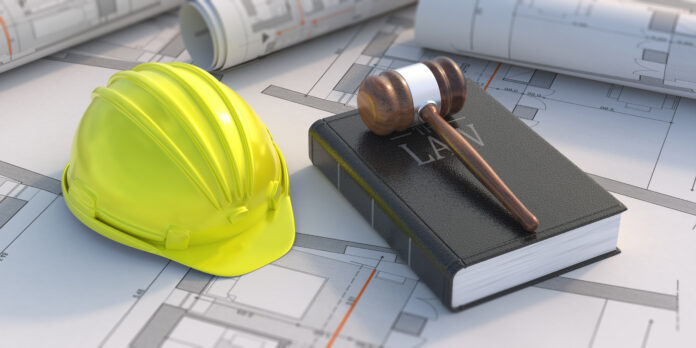By Leor Margulies
Robins Appleby LLP
The COVID-19 pandemic, combined with strikes and other unavoidable delay events over the last four years, has put the Unavoidable Delay provisions in the Addendum under a microscope and stretched the efforts of developers and lawyers to come to grip with a process that was never equipped for either a pandemic or multiple events, nor brought off to handle many other types of unavoidable delays that should be covered. I hope to give readers the benefit of some of my experiences on conciliations with Tarion, as well as disputes with purchasers looking to get out of their deals or earn $7,500 delayed closing compensation bonus. If you need real legal advice on the specific issue, speak to your lawyer or call me.
1. The basic premise of Section 5 and Tarion’s position
Section 5 of the Addendum is a very short section relating to Unavoidable Delays. Tarion, in interpreting the section on applications from purchasers who are claiming delayed closing compensation, takes a very strict view of the requirements and rarely allows any deviation or flexibility to the wording in the sections.
More importantly, the purchaser, when filing a delay closing compensation claim, is not really required to present their case as to why they are entitled to compensation as a result of a failure to meet the requirements under Section 5 of the Addendum. The purchaser merely has to make the claim (without any basis or evidence) and then it is up to the developer to fully substantiate that it has complied in all respects with the requirements under Section 5. Tarion makes its own full investigation and probably similar to other conciliations, acts both as an adviser of the purchaser in making the assessment of the facts, and then renders its decision. It is like you are presumed guilty until you establish otherwise.
To be fair, however, Tarion does not render its decision lightly in these situations and, based on the writer’s experience, offers the developer opportunities to address concerns or questions that it has and provide explanations to the initial review completed by the examiner. Like most of its interpretations of the Addendum and the regulations and legislation, Tarion is very conservative. Therefore, strict adherence to the wording of this section, as difficult as it may be when dealing either with the pandemic or multiple Unavoidable Delay Events, is the watchword.
2. First Notice
A couple of things to keep in mind:
(a) The First Notice must go out within 20 days of the vendor knowing or ought to reasonably have known that an Unavoidable Delay has commenced. Many people think that the 20 days starts ticking when the actual event occurs, such as a strike, flood or the start of a pandemic. That is not the case. There are two components to an Unavoidable Delay Event. One is the actual event which has to qualify as an Unavoidable Delay under the Addendum definition. Second, there has to be an impact or a real potential impact on the home or condominium being built by the Unavoidable Delay. For instance, let’s say the framers go on strike and as a result the bricklayers all decided to go to Italy for the summer. However, at the time the framers go on strike, framing may have finished on your project, but you are unaware of the potential loss of bricklayers. At the point in time when it becomes apparent to the builder that there is going to be a delay in your project because of the bricklayers leaving due to the framing strike, the 20-day clock to send the first notice begins and not when the strike first arose. Similarly, for the pandemic, it was not on March 11, 2020 when the WHO announced that there was a pandemic, that starts the 20-day clock for sending the first notice. It was only when a builder could reasonably determine that there was an impact on the completion of the home or condominium as a result of the pandemic that the 20-day clock should start ticking to notify purchasers. That could be weeks or months later and for many of my clients that is exactly what happened. No one knew what was going to happen after March 11, 2020.
3. Second Notice
(a) The Second Notice ending the Unavoidable Delay Event under Section 5(c) is the more problematic one. The first problem is determining the total extent of the delay which includes the actual event, such as a strike of six weeks or a flood of two days plus the remobilization period, which is the impact of the event on the completion schedule of the home or condominium unit. That is always the most challenging. It is always the best guess of the developer as to when the remobilization will be completed so that the Unavoidable Delay Event ends and a calculation can be made of the total Unavoidable Delay.
(b) When does the 20 days start running to send the Second Notice?
Section 5(b) talks about sending the Second Notice within 20 days of when the vendor knew or ought to have known that the Unavoidable Delay had ended. How does he know when it ends until it has ended or when it will end? In most cases, it is very difficult to determine when it has ended until it has or nearly ended or normalized. Tarion’s position is that unless there are exceptional circumstances, the 20-day clock starts running from the day that the Unavoidable Delay period ends if the end predates the Second Notice. For instance, if you decide that it ended on July 25, 2023, you have 20 days thereafter to send out your notice. I was involved in a multiple Unavoidable Delay event situation which was a nightmare, involving a strike, flood and COVID-19. Calculating all of the impacts on different parts of the building was a huge logistical challenge. In the end, the Second Notice was sent out 21 days after date that we fixed as the end of the Unavoidable Delay period. Initially, Tarion took the position that the vendor was out of time, but when I explained to them the difficulties in determining the impacts of all of the delays and coupled with evidence that an informal notice was sent to the purchasers on July 29, 2023, five days after the end of the Unavoidable Delay period, advising purchasers that the end was near and actually even giving them proposed firm occupancy dates, Tarion ruled that 21 days following the end of the Unavoidable Delay period was appropriate under these exceptional circumstances. Always be sure to include in your Second Notice the actual date that the Unavoidable Delay period ends (although there is a Court of Appeal case that can provide relief to builders in certain cases will fail to do so).
(c) Impact of the pandemic
How do you determine a remobilization period for the pandemic? We know when it starts, such as when WHO or some other government agency declares a pandemic emergency. In some cases, the emergencies can subside and things get normalized. Then we get a second wave, such as Omicron. This could constitute a new Unavoidable Delay for builders which may have reinstated their critical dates when they mistakenly thought the impact on their particular project or series of houses was over and then suffered a second time with the rise of Omicron.
The problem really is, how do you know when the pandemic impact has ended? There is no remobilization. There is only an assessment of when the impacts are over or nearly over and the builder is comfortable that he can now predict his construction schedule based on existing supply chains and labour supply.
Many builders could not really get comfortable with the supply chain timing and simply fixed their dates anywhere from 30 to 90 days prior to closing. Many of those fixing them initially at 90 days, they later changed them to 60 or 30 days afterwards because even at the last minute, the supply chain impacted their completion of the units, such as kitchens or appliances.
As a result, many Second Notices relating to the pandemic are sent out years after the First Notice. How do you know when the 20 days starts, such as when is the pandemic’s impact over? With all due respect, the current definition doesn’t really work and a new one is required.
In any event, for all delayed closing compensation claims and in particular for COVID-19 related claims, vendors will need to have detailed records of all the impacts over the time period during which they are claiming a delay. This will be a very challenging process for any builder involved in a delayed closing compensation claim where COVID-19 is the Unavoidable Delay event.
4. Multiple Unavoidable Delay events
This is one of the most challenging situations that lawyers and developers faced this go around because of the impact of strikes and the pandemic. I had a file that involved a third Unavoidable Delay, being a flood that occurred one month before closing in a midrise condominium that started on the 18th floor and caused significant damage prior to occupancy. Then a strike occurred two months later and COVID-19 supply issues impacted on the ability to rebuild. Talk about bad things coming in threes.
The current Addendum does not really work for multiple events. Tarion was forced to follow the strict letter of Section 5 and treat each one separately, having a beginning and a hypothetical end, irrespective that the end of some Unavoidable Delays would be totally artificial and difficult to separate from the other concurrent Unavoidable Delay events. Nonetheless, you have to send out a First Notice at the start of each one and a Second Notice ending each one within 20 days of knowing or ought to be knowing of the end of each Unavoidable Delay event.
5. Some practical tips
Based on some conciliations that I have been involved with as a result of multiple notices, certain lessons were learned for multiple unavoidable events:
(a) You cannot send a Second Notice out for the end of an Unavoidable Delay event that occurred first when all Unavoidable Delays have concluded. You have to do it within 20 days of the artificial date that you will come up with as to when the first Unavoidable Delay event ended. You may not really know what the date is and you have to come up with some artificial date because of the other impacts, but if you wait until the last date of all the Unavoidable Delay events and then provide a provisional critical firm occupancy date in the past, it will be rejected.
(b) Unavoidable Delays can overlap and each Unavoidable Delay has its own start date. Delay periods can run on top of each other. Tarion has made it clear that you pick the number of days that you need from the maximum but don’t have to use the total. That is clear from the conciliation decisions that I have seen. The second Unavoidable Delay event delay period can only be added to the new provisional date of the first Unavoidable Delay. All of this is totally artificial and tortuous. Addendum revisions to this process are necessary.
(c) For an Unavoidable Delay event when you have multiple events, the Second Notice for the first Unavoidable Delay has to go out within 20 days of the end of that date and you have to pick critical dates that are prospective.
6. Additional general tips
(a) Maintaining substantial evidence and backup for the impact of the delays as this is critical if challenged by a delayed closing compensation claim.
(b) Adhere to the deadlines stipulated in Section 5 and the requirements. There may be some latitude, but very little.
(c) If the vendor has been in constant contact with the purchasers to keep them apprised and in particular, when the Unavoidable Delays are ending, Tarion will take that into consideration when evaluating exceptional circumstances that should benefit the vendor.
(d) Remember that the Unavoidable Delay starts when the event occurs and its impact is known or reasonably could be expected to be known, and on the date the First Notice is sent.
(e) Be extra careful when dealing with multiple events. The start dates can overlap and the total number of days can overlap. Always set out dates prospectively and not retrospectively. Send out Second Notices within 20 days of the end of each Unavoidable Delay event with the provisional Firm Occupancy Date no earlier than 10 days after the Second Notice is sent out.
(f) Where the delays are very extensive, as in COVID-19 they will be, expect Tarion to be extremely vigilant in looking at the basis for the length of the delay, whether it is a fire, flood or pandemic. Keeping purchasers advised regularly of the status of construction will help put the builder in a better light when delayed closing compensation claims arise.

Leor Margulies is Real Estate Group Co-Head, Robins Appleby LLP. robinsappleby.com.












